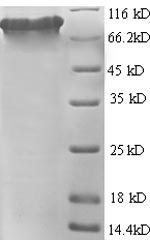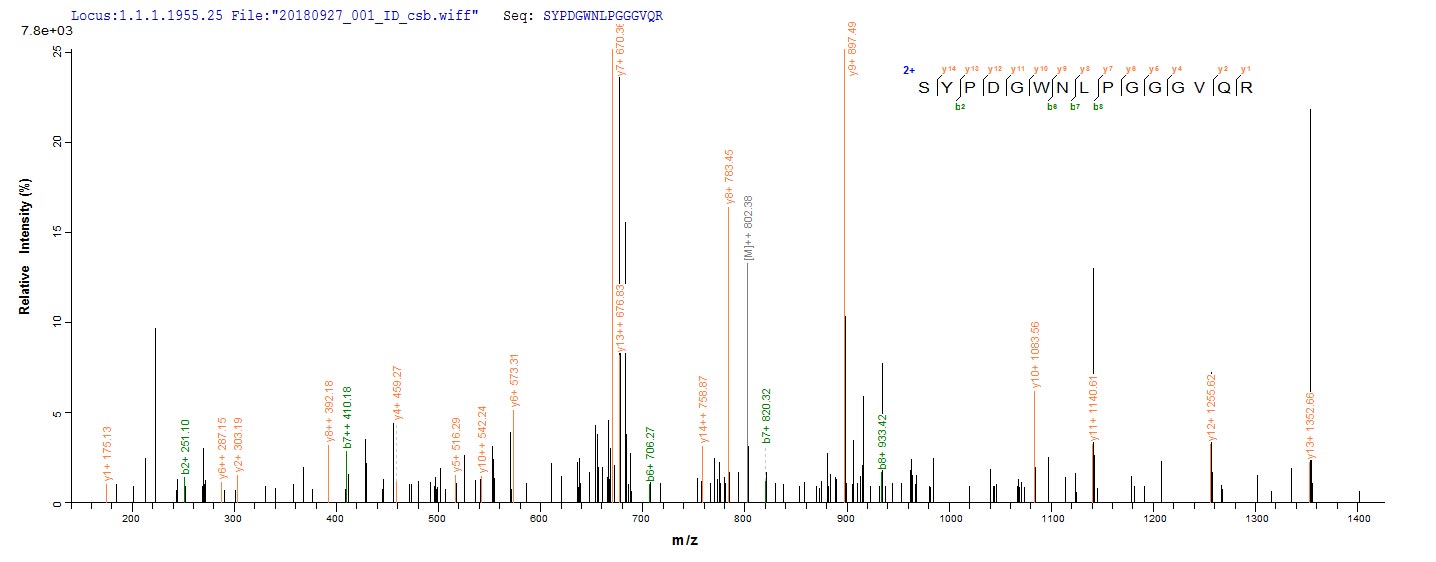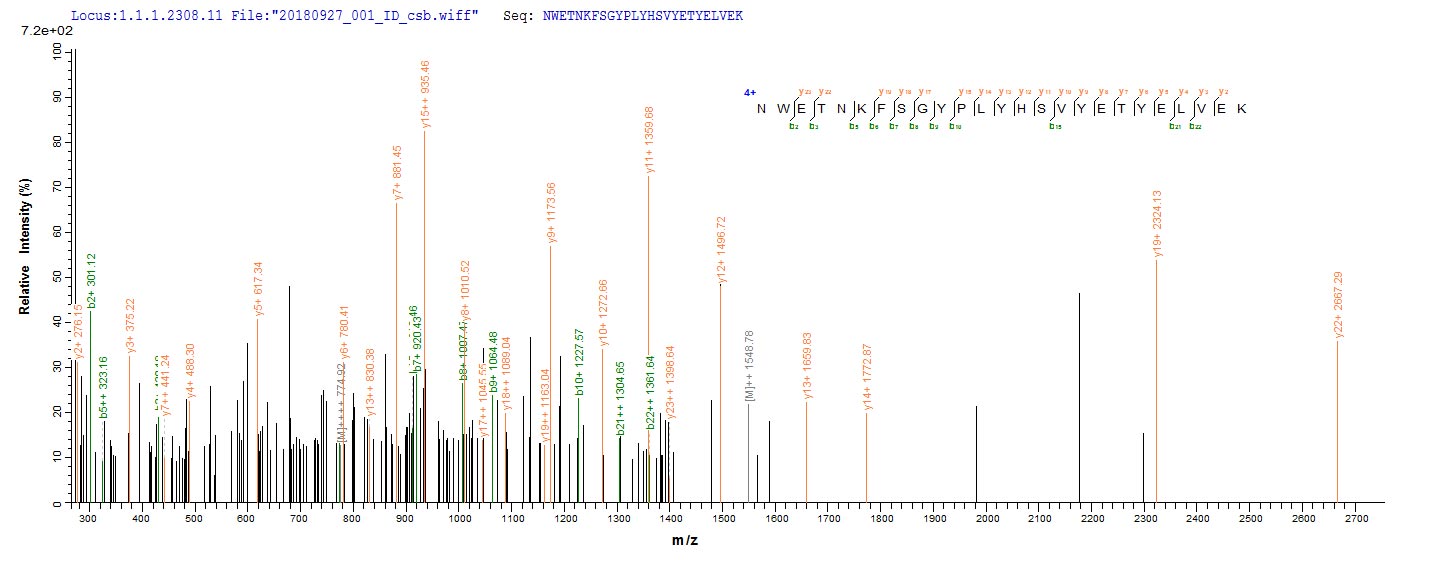Our recombinant human FOLH1 protein is expressed in an E.coli system, providing a partial-length protein that contains the 48-750aa region. This protein features an N-terminal 6xHis-tag, facilitating easy purification and detection in your experiments. With a purity greater than 90% as determined by SDS-PAGE, this recombinant FOLH1 protein offers reliability and consistency for your research needs. Available in liquid or lyophilized powder forms, you can select the format that best meets your laboratory requirements.
FOLH1, also called GCP2, is a type II transmembrane protein that plays a crucial role in the central nervous system and prostate tissue. FOLH1 exhibits folate hydrolase and NAALAdase activity, which is essential for the hydrolysis of N-acetyl-aspartyl-glutamate (NAAG) into glutamate and N-acetyl-aspartate (NAA) [1][2]. The protein's enzymatic activity is vital for regulating excitatory neurotransmission, as it modulates the levels of glutamate, a key neurotransmitter involved in synaptic plasticity and cognitive functions [3]. Moreover, variations in the FOLH1 gene have been linked to metabolic disorders, such as hyperhomocysteinemia, which is associated with neural tube defects and other developmental issues [5]. Notably, FOLH1 is overexpressed in various cancers, particularly prostate cancer, making it a target for therapeutic interventions and imaging techniques [4][6][7].
References:
[1] F. Sedlák, Parallel metabolomics and lipidomics of a psma/gcpii deficient mouse model reveal alteration of naag levels and brain lipid composition, Acs Chemical Neuroscience, vol. 15, no. 7, p. 1342-1355, 2024. https://doi.org/10.1021/acschemneuro.3c00494
[2] Y. Li and P. Cozzi, Angiogenesis as a strategic target for prostate cancer therapy, Medicinal Research Reviews, vol. 30, no. 1, p. 23-66, 2009. https://doi.org/10.1002/med.20161
[3] X. Yao, J. Glessner, J. Li, X. Qi, X. Hou, C. Zhuet al., Integrative analysis of genome-wide association studies identifies novel loci associated with neuropsychiatric disorders, Translational Psychiatry, vol. 11, no. 1, 2021. https://doi.org/10.1038/s41398-020-01195-5
[4] A. Rizzo, S. Dall’Armellina, D. Pizzuto, G. Perotti, L. Zagaria, V. Lanniet al., Psma radioligand uptake as a biomarker of neoangiogenesis in solid tumours: diagnostic or theragnostic factor? Cancers, vol. 14, no. 16, p. 4039, 2022. https://doi.org/10.3390/cancers14164039
[5] J. Guo, H. Xie, J. Wang, H. Zhao, F. Wang, C. Liuet al., The maternal folate hydrolase gene polymorphism is associated with neural tube defects in a high-risk chinese population, Genes & Nutrition, vol. 8, no. 2, p. 191-197, 2012. https://doi.org/10.1007/s12263-012-0309-3
https://doi.org/10.1007/s12032-020-01427-0
[6] T. Jeitner, J. Babich, & J. Kelly, Advances in psma theranostics, Translational Oncology, vol. 22, p. 101450, 2022. https://doi.org/10.1016/j.tranon.2022.101450
[7] A. Adnan and S. Basu, Psma receptor-based pet-ct: the basics and current status in clinical and research applications, Diagnostics, vol. 13, no. 1, p. 158, 2023. https://doi.org/10.3390/diagnostics13010158








